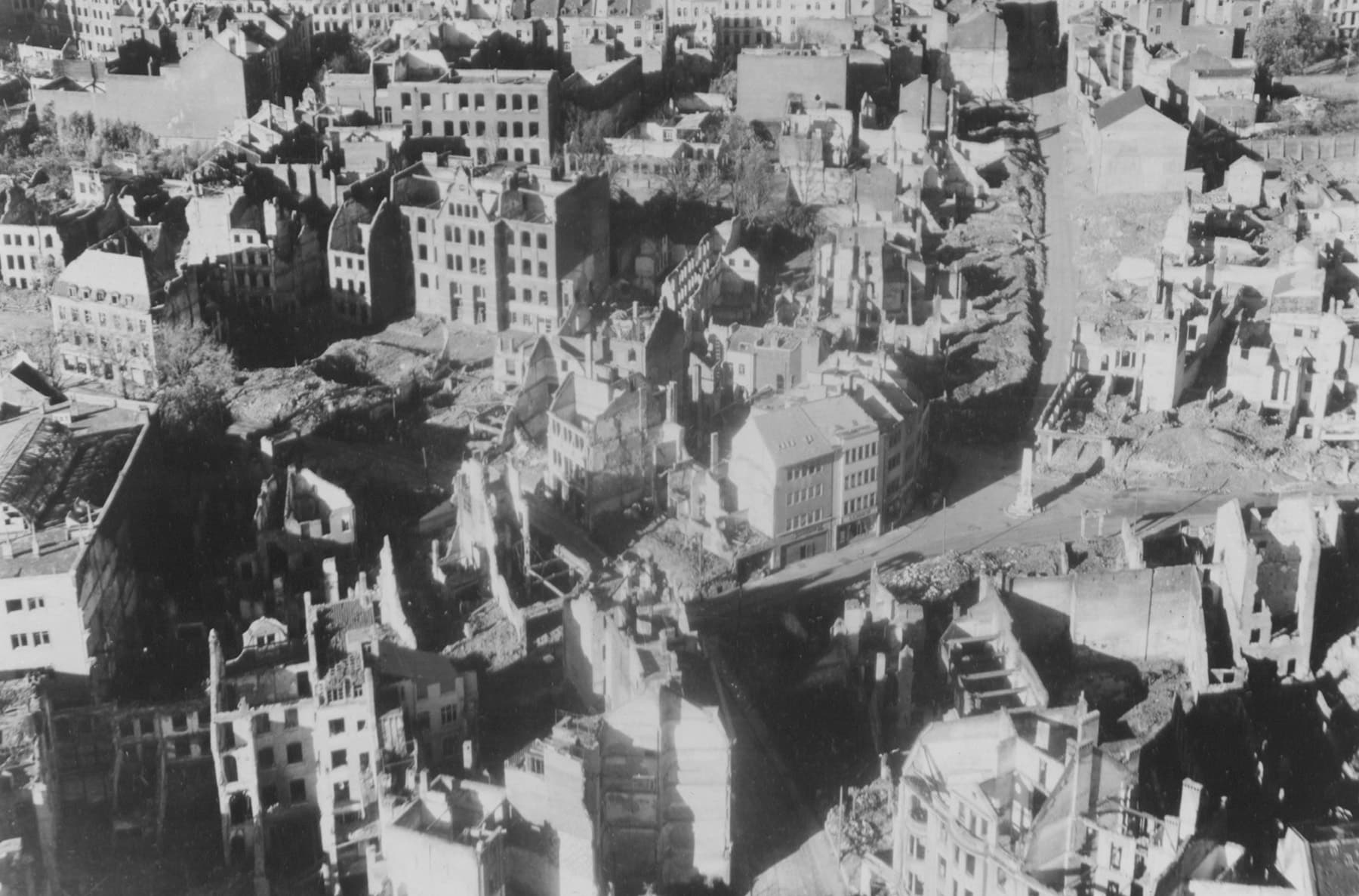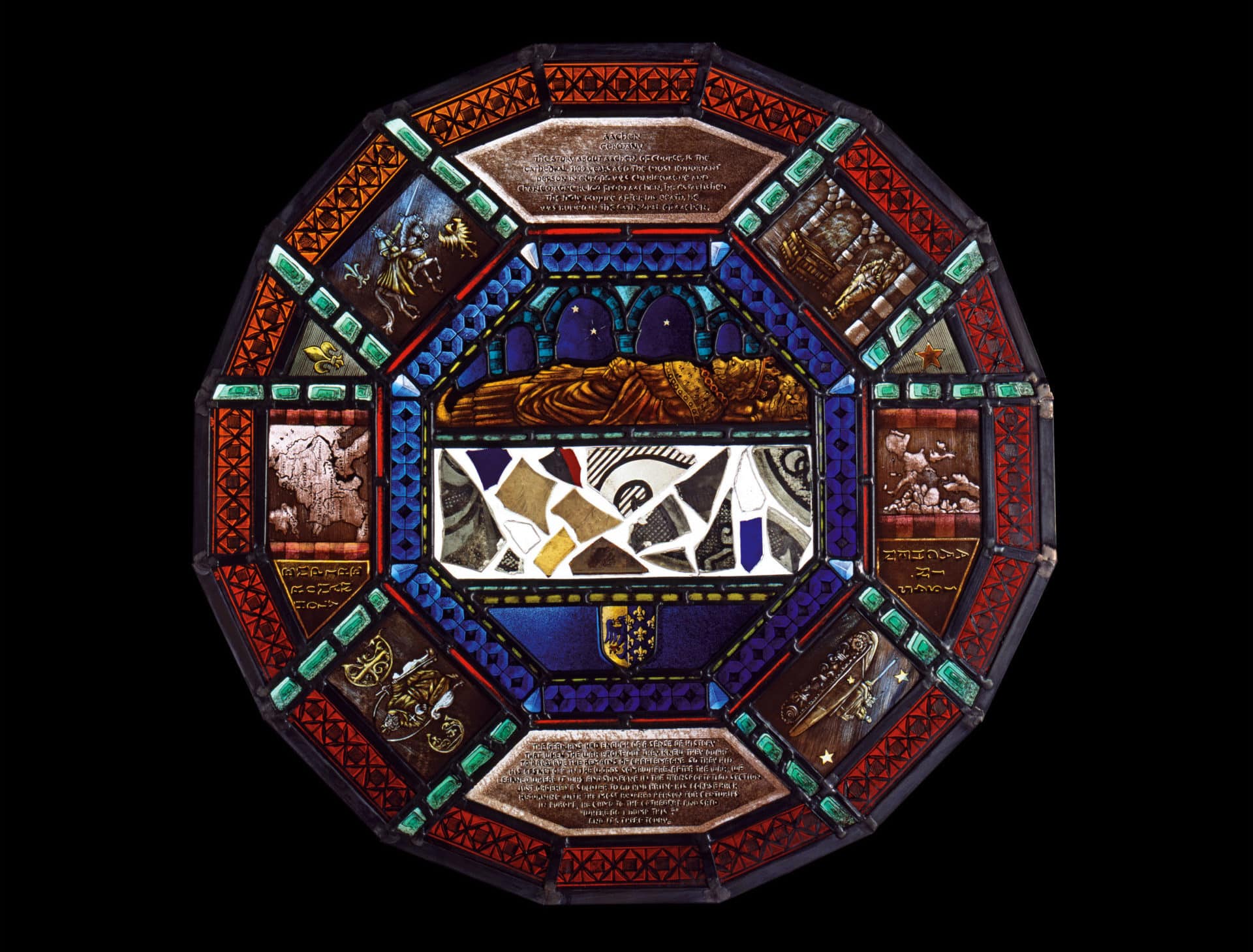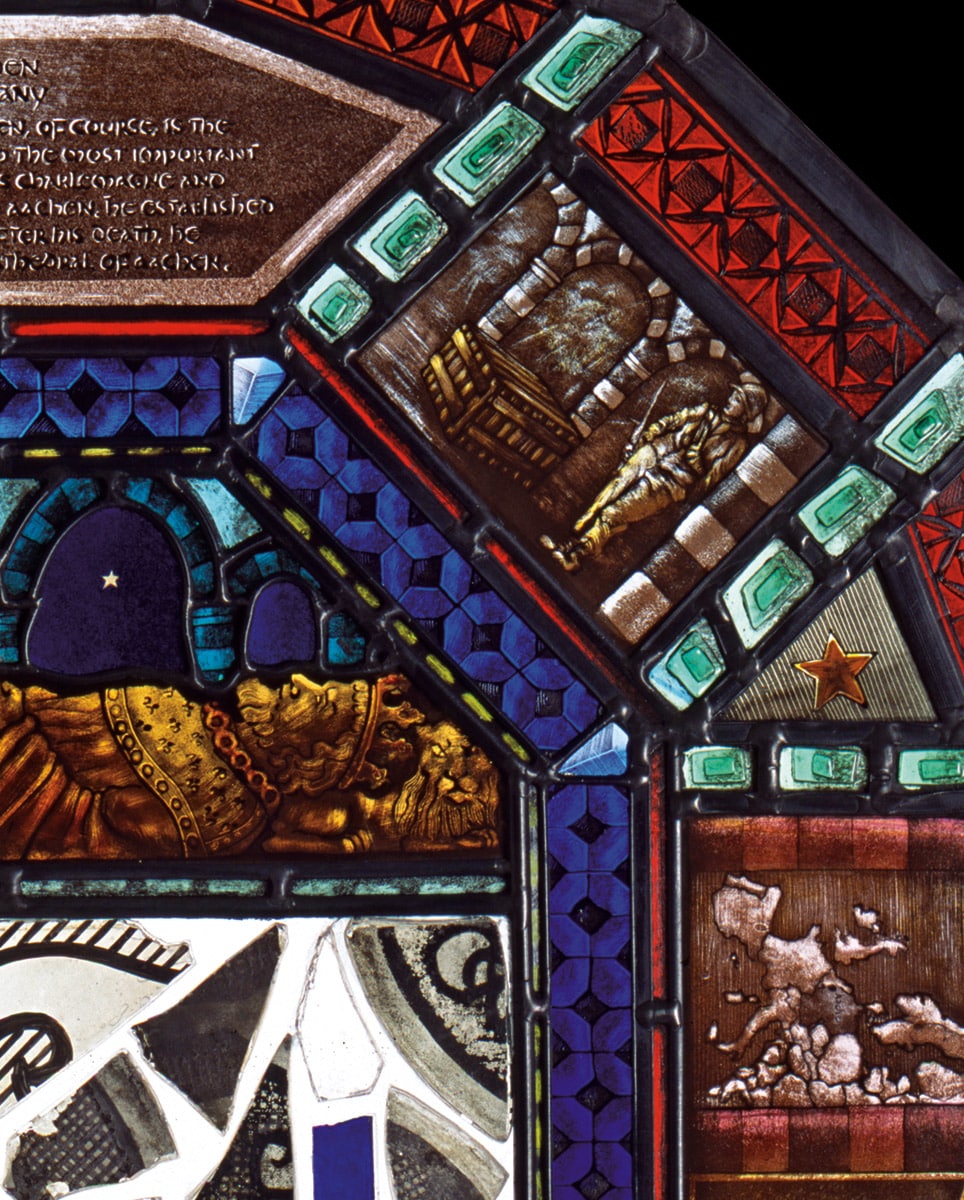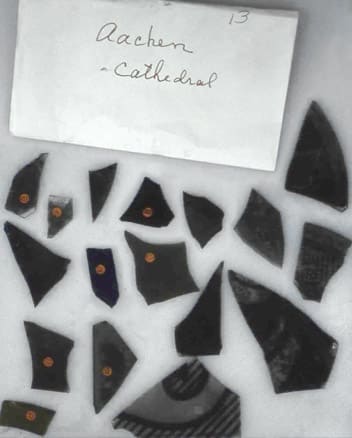
Fred’s Journey
Aachen Germany
The story about Aachen, of course, is the Cathedral. Eleven hundred years ago the most important personage in Europe was Charlemagne and Charlemagne ruled from Aachen. He established the Holy Roman Empire, uniting Europe. After his death he was buried in the Cathedral of Aachen.
The Germans had enough of a sense of history that when the war broke out they knew they ought to preserve the remains of Charlemagne. So they hid his casket somewhere in the woods. After the war, we learned where it was and someone in the Transportation Section just ordered a soldier to go and bring his corpse back. Returning with the most revered person for centuries in Europe, he came to the Cathedral and said, ‘Where do I dump this?’ And it’s there today, the bones of Carolus Magnus, the first man to unite Europe, now encased in a shrine.

Artist’s Statement
- Marc Le Rest
- Armelle Le Roux
From


This piece attempts to recreate the architecture, motifs, and geometry of the Palatine Chapel at Charlemagne’s palace in Aachen. The chapel is a domed, double-shelled, two-story octagon. As it is the resting place of Charlemagne, who established the Holy Roman Empire, the shards collected there have been used to represent his grave. Around the central grave image, the drawings and maps tell two stories that intersect: on the left Charlemagne, with his sword and steed and, on the right, with their tanks, the American soldiers who restored the integrity of Europe.
Artist Information
-
Marc Le Rest
-
Armelle Le Roux
Atelier Le Roux
3246 Ettie Street
Studio 11 Oakland, CA 94608
Specifications
Number of shards: 17
Dimensions: 28 1⁄2″ × 28 1⁄2″
Medium: painted, stained, enameled, sandblasted and leaded blown glass


